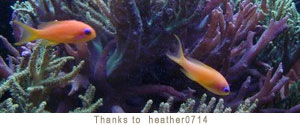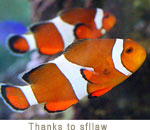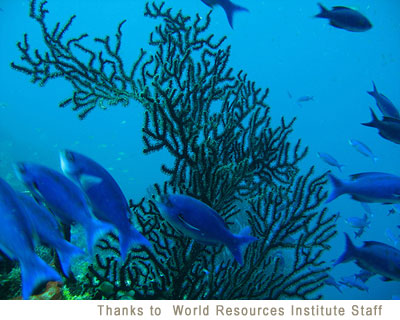First Saltwater Aquarium
Support Your Local Fish Store 
Before you purchase your first saltwater aquarium spend time reading and learning as much as possible. Most of the new marine aquarium horror stories I’ve heard are the direct result of misinformation. Know that advice varies and different people have different opinions on how to maintain your saltwater fish tank.
There are a lot of stores out there that do not spend time training their staff. Visit your locate tropical fish store and ask questions. Note how confident the staff is, do they know what they are talking about? can they confidently answer your questions? Do not be afraid to ask the opinion of sales staff in different fish stores to see who is more knowledgeable.
When you find a store you feel comfortable with support that store. For years I have supported stores that helped me and had knowledgeable staff. If I find a cheaper price elsewhere I’ll ask my local favorite store if they can match it and most of the time they can. I also do realize that you always get what you pay for, so I never freak out when a good store is a little more expensive, because good staff cost more!
After you have found a good store to purchase your aquarium equipment, its time to figure out the size of aquarium and where you want to put it in your house.
Aquarium Type
There are two types of marine aquariums to chose from. Invertebrate/Coral or Fish. The two cannot be combined because many of the beautiful marine fish will eat your coral and invertebrates. It takes skill to keep corals alive and fish are much easier. With the high costs associated with the marine tank, the best advice is to start slow and set up a saltwater fish only aquarium and leave the corals until later for your second tank. The Coral reef tank is best left to the more advanced. We highly recommend you begin with a marine fish-only tank.Aquarium Sizing
 The general rule of thumb with any aquarium is the bigger the better, based on how much you feel comfortable spending and the amount of space you have for the aquarium. Especially important for a saltwater tank, large is essential because marine fish grow quite large. Think of it this way: the ocean is a vast expanse of water, you are taking the fish from there into a mini-ocean in your house. They require lots of space to allow them to grow and to prevent any territorial issues between marine species.
The general rule of thumb with any aquarium is the bigger the better, based on how much you feel comfortable spending and the amount of space you have for the aquarium. Especially important for a saltwater tank, large is essential because marine fish grow quite large. Think of it this way: the ocean is a vast expanse of water, you are taking the fish from there into a mini-ocean in your house. They require lots of space to allow them to grow and to prevent any territorial issues between marine species. The best shape for your aquarium is a low rectangle. Allow as much surface space as possible. Deep aquariums are unnatural and fish swim side to side, not up and down. Also, aquariums over 30 inches tall can be very difficult to maintain.
With aquariums over 110 gallons you may need to check with a contractor or engineer to make sure your floor can handle the weight, unless you putting it in the basement.
When looking for a suitable location for your aquarium stay away from areas that have direct sunlight or are very bright rooms, the daylight can cause excessive algae growth and overheating. The next step is to decide what your aquarium will sit on. An aquarium and water can be very heavy, water weighs approximately 3.78 pounds per US gallon and some large tanks can weigh hundreds even thousands of pounds empty. So a 90 gallon aquarium filled with water might weigh some where around 1000 pounds. Most aquarium manufacturer’s warranties are either void or limited if the aquarium is not on a manufactured aquarium stand. Aquariums are designed to evenly spread the weight out on the bottom, if an aquarium is sitting on a surface that is warped or twisted it may leak or crack.

The stand the tank is on needs to be level, if you’re using a metal stand for aquariums over 100 gallons you may want to put a sheet of plywood and Styrofoam between the tank and the stand.
Saltwater Fish Tank Substrate
There are two recommended ways to cover the bottom of your tank. Use marine sand and live rock. Not only does live rock look good but it's functional too. As the name suggests, live rock has living bacteria that provides natural biological filtration for your aquarium by contributing to your fish tank's own ecosystem to reduce ammonia and nitrate in your tank. Suitable for both reef tanks and saltwater fish tanks, live rock is an inexpensive and easy form of filtration. Simply pile in your tank and let it do all the work! marine sand adds a realistic touch to your little piece of ocean in your house.Aquarium Heating
Marine fish live all over the world and is different temperature ranges however most saltwater fish found in fish stores prefer temperatures between 75-79 F. One of the most popular methods for heating the aquarium is to use submersible heaters with thermostats. If your tank is large, you may need 2 heaters, place one at each end of the aquarium. Be sure to have thermometers to monitor the temperature. You can find more information about heaters here: Aquarium HeatersFor maintenance advice and tips, click here: Maintaining your Marine Aquarium
For the next steps in setting up your marine aquarium, click here: Saltwater Aquarium Lighting
For the advice about marine algae in the aquarium, click here: Marine Algae
